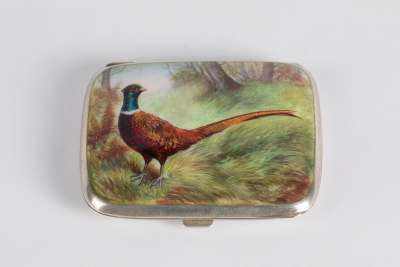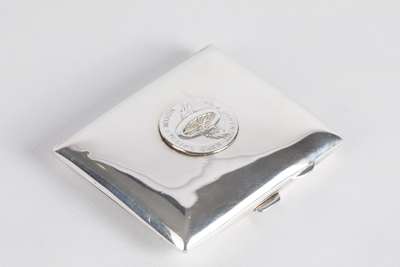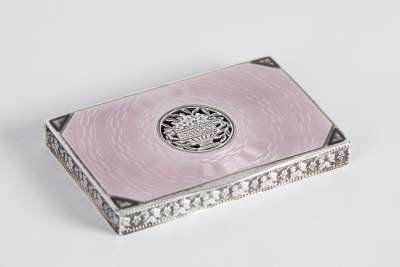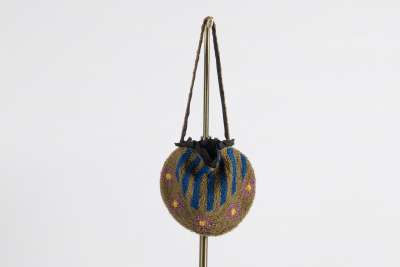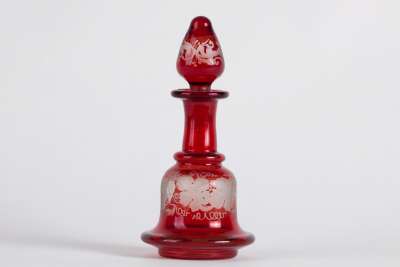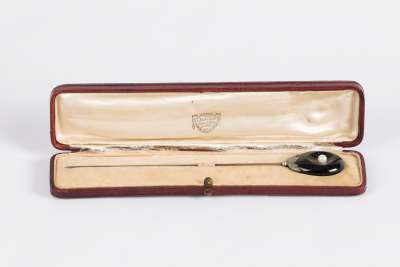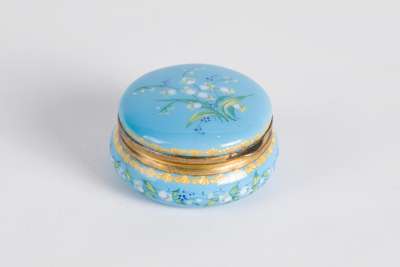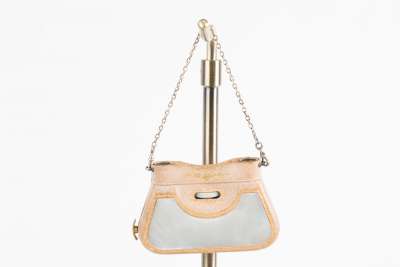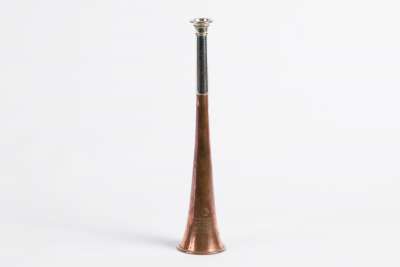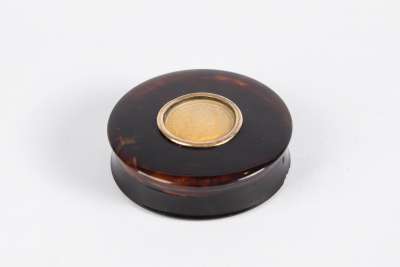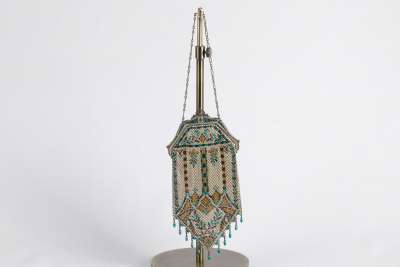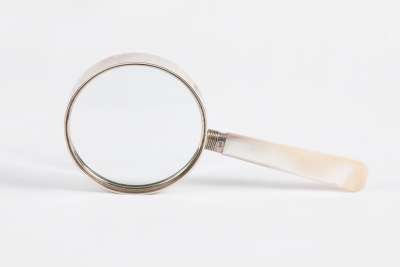This sulphide glass portrait paperweight, dating from circa 1790–1800, features a depiction of George IV, the Prince Regent. The central white ceramic portrait presents him in a classical profile, facing left and adorned with a laurel wreath, a traditional symbol of authority and triumph. The detailed geometric crosshatch background enhances the contrast with the figure. Encased within a clear glass dome, the image is magnified and protected, with the glass playing with light and depth to create an elegant, three-dimensional effect. The circular glass is set within a smooth, glossy black ceramic square mount, providing a striking monochrome aesthetic typical of neoclassical design. While the specific maker remains unattributed, the piece stands as a testament to the craftsmanship of the period, with its origins likely rooted in Britain.
Condition Report
Overall, the paperweight is in good condition. The back of the base is entirely black, with wear consistent with age. The polished base shows minor surface scratches that do not detract from the piece's historical value or integrity. No chips or cracks are visible, ensuring the clarity of the glass and the preservation of the ceramic portrait within. The careful maintenance over the years has allowed this antique to retain its decorative and functional qualities, making it a valuable addition to any collection.
Dimensions
Weight: 390 grams. Length: 8.5 cm. Width: 8.5 cm. Height: 2.5 cm.
Original Use: A Functional and Decorative Object
Sulphide glass paperweights were favoured among the aristocracy during the late 18th and early 19th centuries, serving both as functional objects to hold down papers and as decorative items reflecting the owner's taste and status. This particular piece, with its depiction of a prominent historical figure, would have been a conversation starter in any well-appointed study or office, embodying both utility and aesthetic appeal.
Neoclassical Style: A Reflection of the Era
The neoclassical style, prevalent during the Georgian era, is evident in this paperweight's design. The use of classical motifs such as the laurel wreath and the profile portrait reflects the period's fascination with ancient Greece and Rome. The monochrome palette and geometric patterns further underscore the neoclassical influence, with the piece embodying the era's emphasis on symmetry, simplicity, and grandeur.
The Craft of Sulphide Glass Portraits
The creation of sulphide glass portraits involved a meticulous process, requiring skilled artisans to trap a ceramic or plaster medallion within molten glass. This technique allowed for the production of detailed and lifelike representations, preserved within the clarity of glass. The smooth, glossy black ceramic square mount further complements the intricate craftsmanship, highlighting the delicate balance of materials and design that define the piece.
Unattributed Craftsmanship
While the specific maker of this paperweight is unknown, it represents the high level of craftsmanship typical of the period. Sulphide glass portraits were often produced by skilled artisans who specialised in creating detailed and lifelike representations within glass. The lack of attribution does not diminish the piece's historical and artistic significance, as it stands as a testament to the era's artistic achievements.
Collected by Fans of Historical Portraits
Collecting sulphide glass portraits became popular in the 19th century, with many collectors drawn to their intricate designs and historical significance. This paperweight, featuring George IV, holds particular value due to its connection to a key figure in British history, known for his influence on the arts and architecture of the time. Collectors appreciate such pieces for the blend of artistry and historical narrative they offer, making them cherished additions to collections focused on neoclassical and Regency era artefacts.


